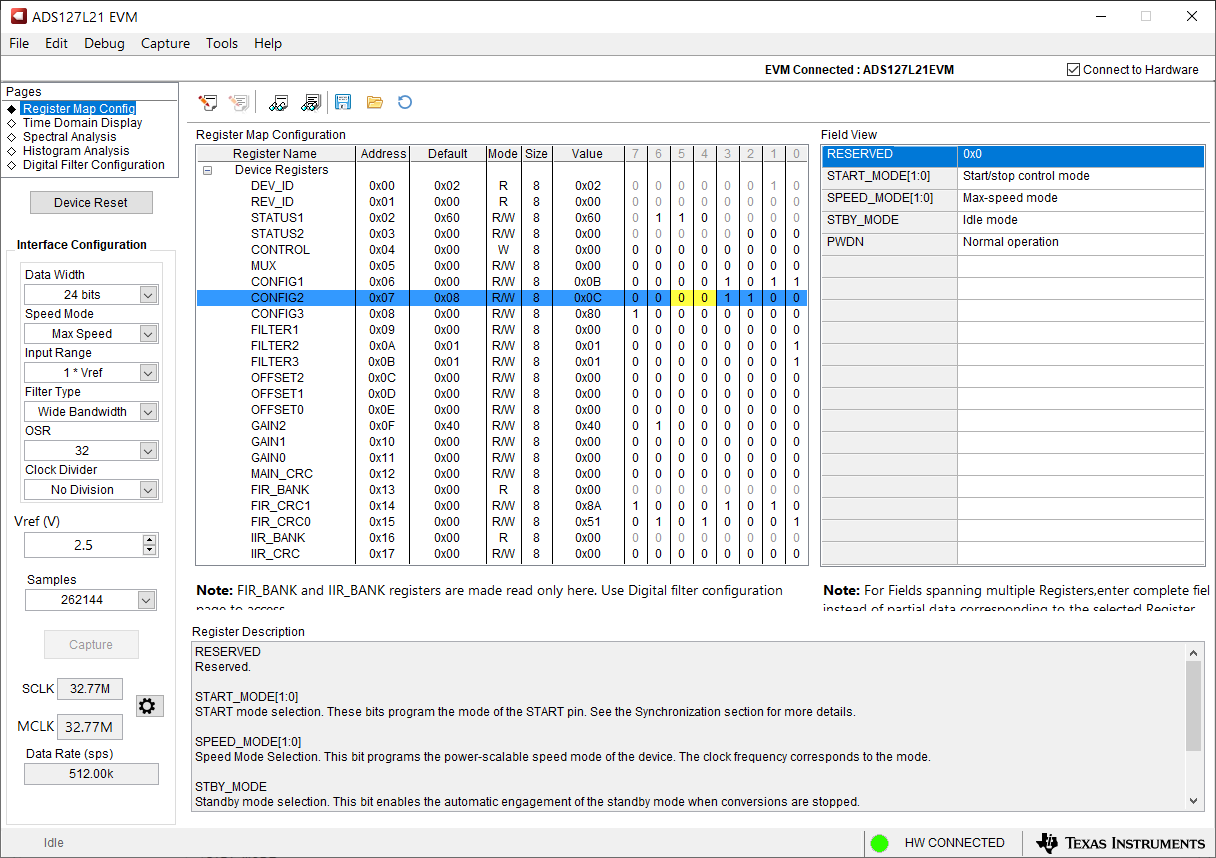SBAU411 February 2023 ADS127L21
6.3 EVM GUI Global Settings for ADC Control
#GUID-1F1C41F6-5FB8-41A6-8F33-36B73F5D7A42 shows that the EVM global controls are located on the left-hand side of the GUI. These controls include the number of samples, MCLK (ADC external clock frequency), SCLK frequency, data rate, and others. In the upper left-hand side of the GUI is the Pages control that allows access to the other key pages in the GUI. #GUID-1F1C41F6-5FB8-41A6-8F33-36B73F5D7A42 also shows the ADC register settings. The registers can be used to set the different device modes (such as filter settings and power settings).
 Figure 6-4 EVM GUI Global Settings for
ADC Control
Figure 6-4 EVM GUI Global Settings for
ADC Control